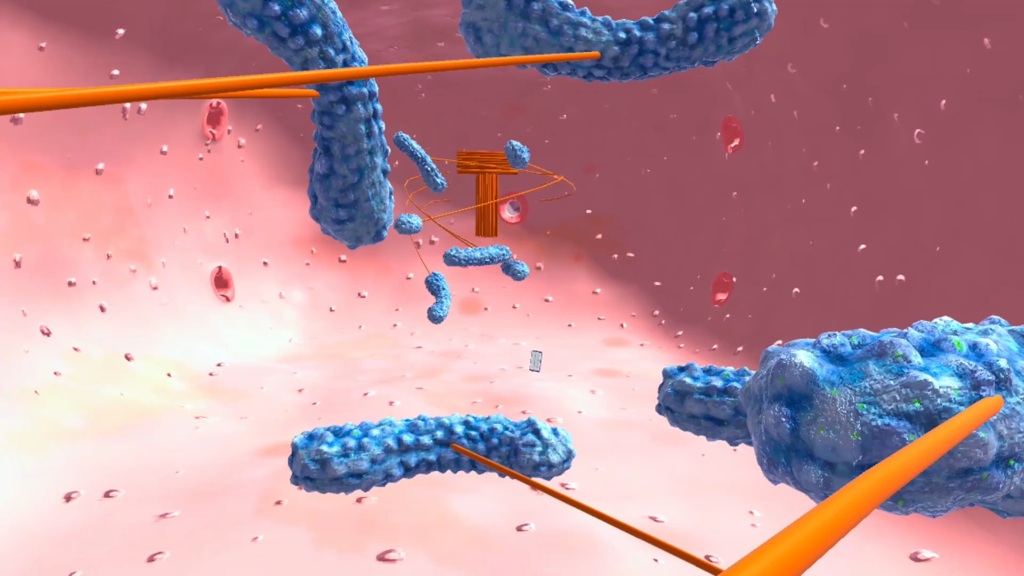

In the rapidly evolving world of STEM education—science, technology, engineering, and mathematics—teachers are constantly faced with the challenge of explaining complex, abstract concepts that textbooks and static images simply can’t capture. Whether it’s understanding the process of mitosis, visualizing a chemical reaction, or studying the principles of physics, traditional methods often fall short. Teachers, who are passionate about their students’ understanding and engagement, often go the extra mile. They create models using cardboard, balloons, and other household materials, putting in extra hours to build something that will make a difficult topic easier to understand.
Take, for example, this video that shows how creative teachers can get when trying to explain complex subjects: Check out this example:
Do you recognize yourself in this?
However, even the most dedicated teachers eventually run into limits. Searching for the right digital resources—whether it’s YouTube videos, diagrams, or interactive materials—can be time-consuming and frustrating. Does the content align with the curriculum? Is it too advanced or too simple? Will it engage students and keep them interested?
This is where virtual reality (VR) can step in as a game-changer. With its ability to create immersive, three-dimensional environments, VR offers teachers a tool that can bridge the gap between complex theory and practical understanding. Imagine students not just reading about gas exchange in a biology class, but actually interacting with gas molecules in a virtual lab, directing oxygen and carbon dioxide to the correct locations. Or picture them customizing spacesuits for different planetary environments in a virtual reality physics experiment, where they must consider gravity, temperature, and atmosphere in real-time problem-solving scenarios.
For teachers, VR is more than just another gadget—it’s a powerful educational tool that can save time and boost engagement in the classroom. It can transform challenging lessons into interactive experiences, helping students visualize and comprehend difficult concepts that static images or videos might not fully convey. At XReady Lab, we’re fully aware of the challenges teachers face in keeping lessons exciting and informative. Our VR classrooms focus on offering curriculum-aligned content that’s easy to integrate into lessons, ensuring that the technology doesn’t create extra work, but rather enhances the teaching process. Whether it’s conducting a virtual chemistry experiment or exploring the human body in 3D, our simulations last between 5-15 minutes, designed to fit perfectly into your lesson structure without overwhelming your schedule or prep time.
The role of the teacher is also evolving in this new digital classroom. No longer just the deliverer of knowledge, teachers become facilitators of learning, guiding students through immersive experiences and helping them explore concepts in a way that’s both engaging and educational. Virtual reality helps teachers turn their lessons into something dynamic, making it easier to explain complex topics like VR chemistry, VR biology, and VR physics without spending hours preparing extra materials.

However, as convenient and immersive as VR is, it’s essential to choose products that align with your school’s STEM lab curriculum and integrate seamlessly into your lessons. The best VR solutions come with ready-made lesson plans and a user-friendly interface that allows for effortless use, saving teachers time rather than adding to their workload.
At XReady Lab, we design our VR educational tools with the teacher’s experience in mind. We know that students are the ones who benefit most from VR learning, but teachers are the ones who use these tools every day to shape the learning experience. That’s why we focus on:
Virtual reality isn’t just for students—it’s a tool that makes teaching more effective and less stressful. Teachers no longer have to struggle with finding the perfect video, creating complex models from scratch, or worrying about whether their students are engaged. VR handles the heavy lifting, giving teachers more time to do what they do best—teach.
If you’re ready to see how VR can transform your classroom, we invite you to try XReady Lab for yourself. Explore our interactive, curriculum-aligned simulations and see firsthand how virtual reality can bring your STEM lessons to life.
👉 Request your free demo today: Request Demo
With XReady Lab, we’re not just transforming classrooms—we’re empowering teachers to be more effective, more creative, and more impactful in their roles.
Frequently Asked
We prodive VR biology, VR physics, and VR chemistry simulations. Please, check our catalog.
Please, fill the form to get demo labs for free.
Please contact our customer support service at support@xreadylab.com or book a call with the team to find out the conditions and book the VR class set up at your school.
Subscription to XReady Lab interactive VR labs. If you are a school, then you are also given access to the VR classroom system. VR class system helps you easily launch VR lessons for a large number of students, follow the experience of each student, as well as customise the content without developers.
We adhere to the world’s generally accepted recommendations and research. Our products are suitable for children from 12 years old.